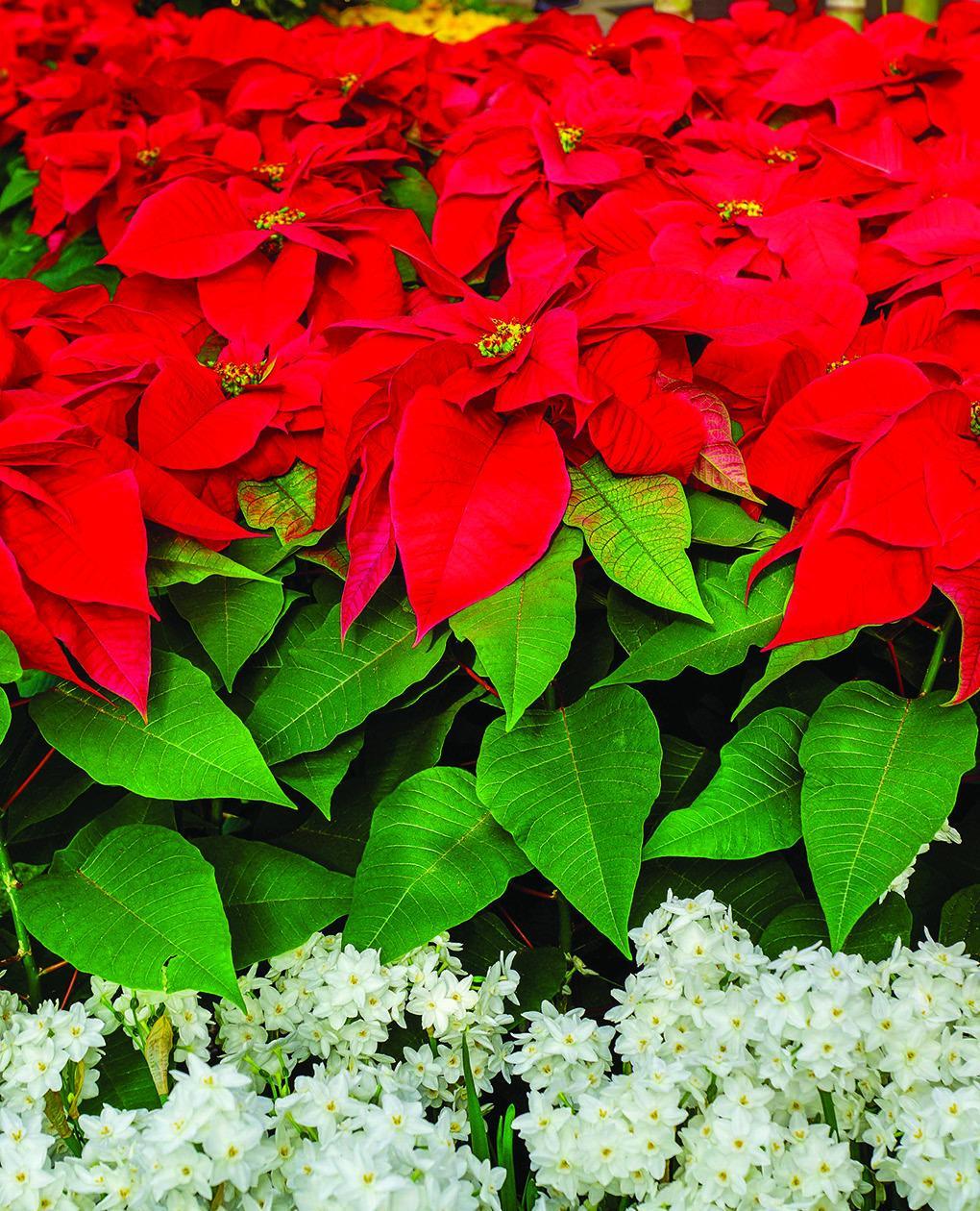
Poinsettias are named for the first American minister to visit Mexico. Joel R. Poinsett, who was taken with the plant Mexicans called flame leaf.
Photo from Metro Creative

Answers to Go
Q.A.
I heard that there is a legend about the Alamo at Christmas time, and a miracle with a plant? Is that the poinsettia story?
There are at least two stories that I found that are like what you describe. The first is a telling of the legend of the Alamo and the berries that grow around Christmas time in the book “Christmas in Texas” by Elizabeth Silverthorne (pp. 21-22). It is written as follows: “There is an enduring legend of a miracle that happened at an early Christmas celebration at the Mission San Antonio de Valero, now known as the Alamo. The mission was established by the venerable Fray Antonio Margil, the first padre president of Texas missions. At Christmastime in 1719, the missionaries set up a realistic nativity scene, using native mosses and foliage, and invited the Indian children to bring gifts for the Christ Child in the manger.
“Some brought strings of beads and animal claws, brightly colored feathers and bits of cloth, furs of small animals and painted horns of buffalo. But one small boy, Shavano, whose family was very poor had nothing to give the infant. Finding Shavano crying bitterly, Father Margil comforted him and went with him in search of a gift. Finally, they came upon a little vine with green berries and leaves, which they dug up and planted in a clay pot. Although Shavano was not satisfied with his spindly offering, he presented it, asking the Christ Child to accept it and make it beautiful.
“The next morning, the story goes, Shavano heard people crying ‘¡Milagro!, ¡Milagro!’ (Miracle! Miracle!) Hurrying to the manger scene, he found that the vine had grown and twined itself around the crèche. Its leaves had become a glistening dark green, and the berries had turned bright red, making it the most beautiful of all the gifts around the manger. The vine still grows wild around San Antonio, and at Christmastime its berries are scarlet and its leaves bright green. It has a long scientific name, but we call it the Margil vine in honor of Padre Margil, who witnessed the miracle of that early Christmas at the Alamo.”
“The Legend of the Poinsettia” by Tomie DePaola is a children’s book that is a wonderful story, much like the legend written, above. However, Silverthorne’s book continues to describe the story of the poinsettia, which came to Texas and to the United States from Mexico because of politics connected with Texas. This story (p. 22) is written as follows: “Joel R. Poinsett, the first American minister to Mexico, was in the country during the Christmas season of 1828, trying to purchase the territory of Texas for the United Sates. A knowledgeable botany buff, Poinsett was charmed by the plant the Aztecs call cuitlaxochitz, “false flower” and the Mexicans called the flower of Christmas Eve or Mexican flame leaf. He carried cuttings of the plant back to his home is South Carolina and later sold their cuttings to a nurseryman in Philadelphia. The flower came to be called the poinsettia in his honor and soon became a popular symbol of the Christmas season.”
If you enjoyed these brief Texas Christmas stories and folklore, you may also enjoy the following books found at your library:
• “Great Texas Christmas Legends” by Zeno Zeplin
• “Indo-Hispanic Folk Art Traditions I: a Book of Culturally-based, Year-round Activities with Emphasis on Christmas” by Bobbi Salinas- Norman
• “Short Call: Snippets from the Smallest Places in Texas by Joyce Gibson Roach
• “Sonovagun Stew: a Folklore Miscellany”
• “T for Texas : a State Full of Folklore”
Suzanne Sanders is the columnist for the library. She is the Community Services Manager for the San Marcos Public Library and came from the Austin Public Library in 2015 after having served there as a librarian for over 20 years. She gratefully accepts your questions for this column.











